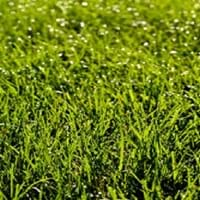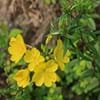Life Span
Perennial
Perennial
Origin
Northeastern United States, Mid-Atlantic United States, Southeastern United States, North-Central United States, Central United States, South-Central United States
Southern Asia, India
Types
Apricot Delight, Copper canyon
Not Available
Habitat
Roadsides, sand dunes, Waste areas
Warmer regions
USDA Hardiness Zone
5-8
6-11
Sunset Zone
1a, 1b, 2a, 2b, 3a, 3b, 4, 5, 6, 7, 8, 9, 10, 11, 12, 13, 14, 15, 16, 17, 18, 19, 20, 21, 22, 23, 24
H1, H2, 5, 6, 7, 8, 9, 10, 12, 13, 14, 15, 16, 17, 18, 19, 20, 21, 22, 23, 24
Habit
Clump-Forming
Mat-forming
Flower Color
Yellow
Not Available
Flower Color Modifier
Bicolor
Bicolor
Fruit Color
Tan
Not Available
Leaf Color in Spring
Green
Gray Green, Dark Green
Leaf Color in Summer
Green
Light Green
Leaf Color in Fall
Green
Gray Green, Dark Green
Leaf Color in Winter
Light Green
Gray Green, Dark Green, Tan
Leaf Shape
Oblong
Arrowhead
Plant Season
Summer
Spring, Summer, Fall, Winter
Sunlight
Full Sun, Partial Sun
Full Sun
Type of Soil
Loam, Sand
Clay, Loam, Sand
The pH of Soil
Acidic, Neutral, Alkaline
Acidic, Neutral, Alkaline
Soil Drainage
Well drained
Well drained
Bloom Time
Early Summer, Summer, Late Summer
Indeterminate
Tolerances
Variety of soil types
Pollution, Salt, Soil Compaction
Where to Plant?
Container, Ground, Pot
Container, Ground
How to Plant?
Divison, Seedlings, Stem Planting
Seedlings
Plant Maintenance
Low
Medium
Watering Requirements
Average Water Needs, Do Not over Water, Never Over-water, Requires regular watering, Water more in summer
Average Water Needs
In Summer
Lots of watering
Lots of watering
In Spring
Moderate
Moderate
In Winter
Average Water
Average Water
Soil pH
Acidic, Neutral, Alkaline
Acidic, Neutral, Alkaline
Soil Type
Loam, Sand
Clay, Loam, Sand
Soil Drainage Capacity
Well drained
Well drained
Sun Exposure
Full Sun, Partial Sun
Full Sun
Pruning
Remove damaged leaves, Remove dead branches, Remove dead leaves, Remove dead or diseased plant parts
No pruning needed
Fertilizers
All-Purpose Liquid Fertilizer, fertilize in growing season
Apply 3-1-2 or 4-1-2 ratio, Nitrogen
Pests and Diseases
Slugs, Snails
Red blotch
Plant Tolerance
Variety of soil types
Pollution, Salt, Soil Compaction
Flowers
Yes
Insignificant
Flower Petal Number
Single
Single
Foliage Texture
Fine
Fine
Foliage Sheen
Matte
Matte
Attracts
Insects
Flying insects, Insects
Allergy
Abdominal pain, Constipation, Diarrhea, Skin irritation
breathing problems, Eye irritation, Hives, Itchiness, Runny nose, sneezing, Throat itching, Whooping Cough
Aesthetic Uses
Beautification, Borders, Landscape Designing, Showy Purposes
Ground Cover, Landscape Designing
Beauty Benefits
Good for skin, Making cosmetics, Stops hair loss
Skin irritation, Skin Problems
Edible Uses
Yes
Insignificant
Environmental Uses
Air purification, Food for insects, Versatility
Air purification, Prevent Soil Erosion, soil stabilisation
Medicinal Uses
Eczema
Cures constipation, Cures foot fissures, Digestive disorders, Eliminate toxins, Fatigue, Halitosis, Improves Breast milk production, Increase red blood cells, Insomnia
Part of Plant Used
Root
Leaves, Stem
Other Uses
Decoration Purposes, Medicinal oil, Showy Purposes, Used as Ornamental plant, Used for its medicinal properties
Animal Feed, Cattle Fodder, Used as Ornamental plant
Used As Indoor Plant
Yes
Insignificant
Used As Outdoor Plant
Yes
Yes
Garden Design
Edging, Feature Plant, Groundcover, Mixed Border
Lawns and Turf
Botanical Name
OENOTHERA 'Cold Crick'
CYNODON dactylon
Common Name
Suncups, sundrops
Bermuda Grass
In Hindi
Evening Primrose
बरमूडा घास
In German
Evening Primrose
Bermuda Gras
In French
onagre
l'herbe des Bermudes
In Greek
Νυχτολούλουδο
Αγριάδα
In Portuguese
Evening Primrose
grama Bermuda
In Polish
wiesiołka
Trawa Bermuda
In Latin
vespere Primrose
Bermuda Grass
Phylum
Magnoliophyta
Magnoliophyta
Class
Magnoliopsida
Liliopsida
Family
Onagraceae
Poaceae
Genus
Oenothera
Cynodon Rich
Clade
Angiosperms, Eudicots, Rosids
Angiosperms, Commelinids
Tribe
Onagreae
Chlorideae
Subfamily
Onagroideae
Chloridoideae
Season and Care of Evening Primrose and Bermuda Grass
Season and care of Evening Primrose and Bermuda Grass is important to know. While considering everything about Evening Primrose and Bermuda Grass Care, growing season is an essential factor. Evening Primrose season is Summer and Bermuda Grass season is Summer. The type of soil for Evening Primrose is Loam, Sand and for Bermuda Grass is Clay, Loam, Sand while the PH of soil for Evening Primrose is Acidic, Neutral, Alkaline and for Bermuda Grass is Acidic, Neutral, Alkaline.
Evening Primrose and Bermuda Grass Physical Information
Evening Primrose and Bermuda Grass physical information is very important for comparison. Evening Primrose height is 1.00 cm and width 0.10 cm whereas Bermuda Grass height is 40.00 cm and width 302.00 cm. The color specification of Evening Primrose and Bermuda Grass are as follows:
Evening Primrose flower color: Yellow
Evening Primrose leaf color: Green
Bermuda Grass flower color: Not Available
- Bermuda Grass leaf color: Gray Green and Dark Green
Care of Evening Primrose and Bermuda Grass
Care of Evening Primrose and Bermuda Grass include pruning, fertilizers, watering etc. Evening Primrose pruning is done Remove damaged leaves, Remove dead branches, Remove dead leaves and Remove dead or diseased plant parts and Bermuda Grass pruning is done No pruning needed. In summer Evening Primrose needs Lots of watering and in winter, it needs Average Water. Whereas, in summer Bermuda Grass needs Lots of watering and in winter, it needs Average Water.





